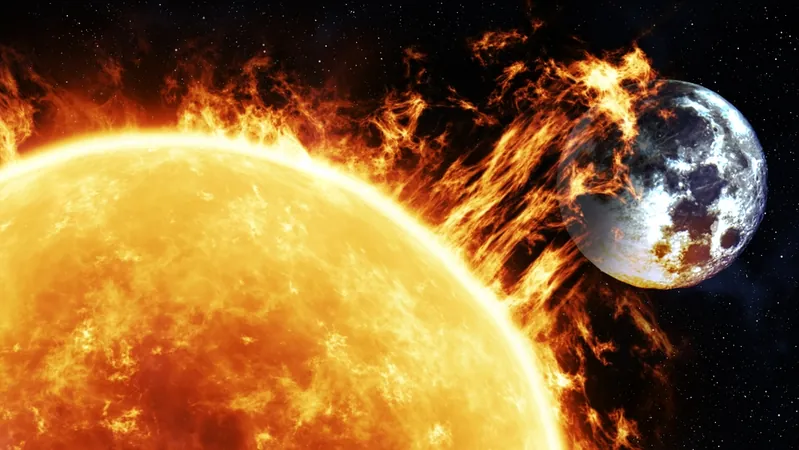
Revolutionary AI from NYUAD Transforms Solar Wind Prediction, Safeguarding Our Tech Dependence!
2025-09-17
Author: Jia
In a groundbreaking development, scientists at NYU Abu Dhabi (NYUAD) have unveiled an artificial intelligence (AI) model that revolutionizes predictions of the Sun's explosive behavior. This innovative system can forecast solar wind speeds up to four days ahead, drastically outperforming existing methods.
Why does this matter? Solar winds, which are streams of charged particles—mainly electrons and protons—flow from the Sun at staggering speeds, sometimes exceeding a million miles per hour. Although invisible, these energetic particles can wreak havoc on Earth, affecting satellites, disrupting communications, and even causing power grid failures.
For instance, in 2022, a surge in solar winds led to SpaceX losing 40 freshly launched Starlink satellites, underlining the urgent need for robust forecasting tools to notify industries and governments of imminent solar dangers.
The AI Model: A Game Changer in Predictive Accuracy
Led by Postdoctoral Associate Dattaraj Dhuri and Co-Principal Investigator Shravan Hanasoge at NYUAD's Center for Space Science (CASS), this cutting-edge AI model analyzes high-resolution ultraviolet images captured by NASA’s Solar Dynamics Observatory. By correlating these images with historical solar wind records, the AI discerns subtle visual indicators that forewarn of impending changes.
The results are remarkable—enhancing predictive accuracy by 45% compared to conventional models and achieving a 20% improvement over previous AI solutions.
Why Solar Wind Forecasting is Crucial
Precise solar wind forecasting is vital for the technological systems that underpin modern life. When strong solar winds collide with Earth's magnetosphere, the repercussions can be severe, such as:
• Displacing satellites from orbit due to increased atmospheric drag
• Damaging delicate electronics on spacecraft
• Disrupting GPS and communication systems
• Harming terrestrial power grids, potentially leading to widespread blackouts.
With NYUAD's AI tool providing days of advance notice, satellite operators, energy firms, and space agencies can implement protective measures before a storm strikes. Dhuri emphasized, “This is a major step toward safeguarding the satellites, navigation systems, and power infrastructure that modern life relies on. By marrying advanced AI with solar observations, we can deliver early warnings that protect critical technology both on Earth and in space.”
Towards a Safer Technological Future!
This remarkable achievement highlights how AI can tackle one of space science's lingering challenges: accurately forecasting solar winds. Better predictions empower humanity to better manage the risks of space weather, ensuring the resilience of essential infrastructure in an era increasingly dependent on space technology.



 Brasil (PT)
Brasil (PT)
 Canada (EN)
Canada (EN)
 Chile (ES)
Chile (ES)
 Česko (CS)
Česko (CS)
 대한민국 (KO)
대한민국 (KO)
 España (ES)
España (ES)
 France (FR)
France (FR)
 Hong Kong (EN)
Hong Kong (EN)
 Italia (IT)
Italia (IT)
 日本 (JA)
日本 (JA)
 Magyarország (HU)
Magyarország (HU)
 Norge (NO)
Norge (NO)
 Polska (PL)
Polska (PL)
 Schweiz (DE)
Schweiz (DE)
 Singapore (EN)
Singapore (EN)
 Sverige (SV)
Sverige (SV)
 Suomi (FI)
Suomi (FI)
 Türkiye (TR)
Türkiye (TR)
 الإمارات العربية المتحدة (AR)
الإمارات العربية المتحدة (AR)